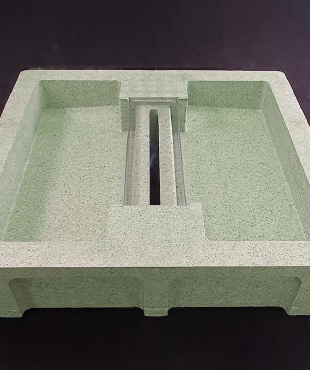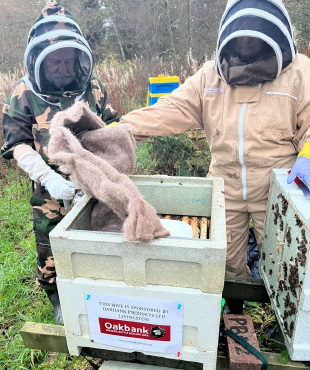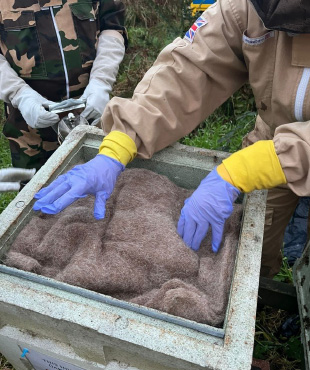So now that the weather has turned distinctly autumnal, it is time to prepare the hives for survival until the spring. It is necessary that the bees have enough stored food to see them through until March since there is no nectar producing forage until then.
In the past month the bees have been doing their best to stock-up and have been bringing in ivy pollen to store as “Bee bread”. This forms the essential carbohydrate diet for young larvae that continue to be produced during this period but in fewer numbers. The size of the colony decreases substantially over this period, and any male bees “drones” have been forced out of the hive to die by the workers, conserving what resources they have to insure winter survival.
Developing bees produced in the last few months are the larger and more robust “Winter Bees”, as they need to live longer, and maintain the colony over this extended period. Rather than spending their time foraging, these bees spend most of the winter clustered together, regulating the temperature around the Queen and brood, keeping them warm. The winter bees generate heat by eating the honey and exercising their flight muscles in the cluster without actually flying, so having sufficient stores is critical. On warmer days they will fly but only to to gather water , or relieve themselves, as they don’t defecate in the hive.
During September/October the hive has been feed a concentrated sugar syrup made of 2 parts white granulated sugar, to 1 part water. The heavier concentration means the bees have less work is evaporating the water as they convert this into stored food for winter. This is poured into a feeder, shown, where the bees have access to the liquid solution though the central slot, but are prevented from drowning by the clear plastic insert.



As the temperature drops at the end of October this is switched to a solid sugar fondant as the liquid syrup is prone to freeze and not be taken by the bees. This is the white sugar block shown on top of the hive frames. The plastic wrapping is left intact other than a small area underneath to provide access for the bees. The bees will only start taking the fondant when they start running out of the honey they have already stored in the brood box.
The warmer the hive can be maintained the less stores will be used by the bees to maintain the temperature, so a thick fleece or other insulation is added above the brood box to help the bees keep in the warmth they generate.